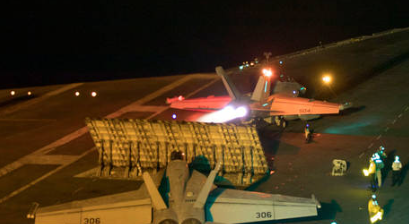Will Israel achieve a historic victory in 2025?
- Hge News

- Jan 6, 2025
- 4 min read
All the military gains of the past year could still prove pyrrhic
In a bid to revitalize its purpose and power, Israel is chasing a victory that is comparable to what it achieved in June of 1967. The goals are to redraw borders, crush the opposition and assert its dominance across West Asia, yet this way of thinking may tremendously backfire because of the recklessness with which it is being implemented.

Left in a state of disarray following the Hamas-led October 7, 2023 attack, Israel had been shaken to its core for the first time since its establishment in 1948. The Palestinian armed offensive from Gaza had collapsed the status quo, not only for the Israelis, but also for the United States and its projects across West Asia.
Prior to the war, Hamas, which governed the beleaguered territory of Gaza, was watching a slow transition occur regionally, both inside Israel politically and through the evaporation of the Palestinian cause for national liberation. In September of 2023, both Israeli Prime Minister Benjamin Netanyahu and US President Joe Biden were publicly expressing their intentions to reshape the region. Washington’s goal was to formulate a normalization deal between Israel and Saudi Arabia that would facilitate the initiation of the India-Middle East-Europe Economic Corridor.
Meanwhile, the Israeli socio-political landscape was experiencing a tectonic shift.
The domestic Israeli question over the Netanyahu-led government’s judicial overhaul plans had spiraled into a deeply polarizing battle over whether Israel would be a religious or secular nation. Amidst this turmoil, the ever growing groups of religious-nationalist Zionists threatened to take over the third holiest site in the Islamic faith, the al-Aqsa Mosque.
Barely a fighting force capable of taking on a modern army that is equipped with the latest in military technology, Hamas was never going to stand a chance of winning by fighting its battle alone, yet decided to throw its weight behind an offensive. Its primary goals were to punish Israel for its violations of the Holy Sites in Jerusalem and to execute a major prisoner exchange; what it ended up doing was triggering a chain of events that would alter the course of history.
A ‘New Middle East’
During his address to the United Nations, back in September of 2023, Israeli Premier Benjamin Netanyahu had proposed a “New Middle East” and today he still speaks of achieving this goal.
After October 7, 2023, the Israelis had found their excuse to finally solve the “Gaza question.” In 2005, former Israeli Prime Minister Ariel Sharon had withdrawn IDF soldiers and illegal settlers from the territory, placing it under a siege which would be tightened severely in 2007. By 2008-2009, then Israeli PM, Ehud Olmert, had launched the first major war against the territory and had developed a plan of slowly starving the civilian population by putting them “on a diet.”
The Israeli war of 2014, under Netanyahu, proved that the Gaza question could only be solved in one of two ways: dialogue or all-out war. Even 50 plus days of bombardment and a ground invasion couldn’t uproot Hamas and force it to surrender. By 2020, UN experts had declared the territory uninhabitable.
Amid the 2023 Hamas-led attack, Israel was robbed of one of the foundational pillars propping up its Zionist ideology, that it could protect its Jewish population better than any other state.
Suddenly, the illusion of Israeli invincibility had faded, and threatened to drag down US power projection. If the might of Israel’s army had proven futile and America could not save it, what would become of Saudi Arabia or other US-allied Arab nations?
Israel, therefore, with full American backing, decided to launch an extermination campaign in Gaza. There would be no rules, no mercy and no real prospects for negotiation until total victory.
Although the US government would eventually change its tone to reflect a modicum of care for civilian life, it would express this sentiment while continuing to send the weapons to ensure that more Palestinian bodies would pile up in the streets of Gaza.
Until September of 2024, Iran appeared to be the strongest actor in West Asia. Its ally Hezbollah was launching daily attacks on Israeli military positions which resulted in around 100,000 Israelis fleeing their homes, while the IDF remained bogged down in Gaza and has continued to suffer casualties.
Meanwhile, Tehran’s allied militias in Iraq and Yemen’s Houthis were also striking Israel.
But this war of attrition strategy from Tehran’s Axis of Resistance lacked imagination, giving the Israelis and Americans time to hatch a number of plots to dismantle each of the fronts individually.
Israel tested the limits of Iran through calculated assassinations of senior figures belonging to the Islamic Revolutionary Guard Corps (IRGC). It then decided to assassinate senior Hezbollah military official Fouad Shukr in Beirut, which was followed hours later by the killing of Hamas leader Ismail Haniyeh in Tehran.
The response that later came from Hezbollah was very tame, calculated to de-escalate tensions, while Iran decided to hold off from striking back. Although this strategy was aimed to prevent a wider regional conflagration, it ended up only serving as a green-light for Israel to escalate even further. Benjamin Netanyahu and the rest of his leadership decided to exploit the hesitancy that was on display, while believing they had called Iran’s bluff.
On September 17, thousands of booby-trapped pagers exploded simultaneously throughout Lebanon, injuring and killing civilians and Hezbollah members alike. This evidently served as a major blow to the Lebanese groups’ communications, while horrifying the general public in what former CIA chief Leon Panetta has described as terrorism.
Even after this blow, it still appeared as if Hezbollah was not prepared to escalate into all-out war. However, the Israelis were still not finished with their assault, and decided to launch a campaign of assassinations that left most of the group’s senior leadership dead, including its Secretary General Seyyed Hassan Nasrallah.
Although the Israeli military failed to achieve much on the ground inside southern Lebanon, the damage was already done and Hezbollah was left to fight a battle it had not prepared for, doing so with the inevitable result being a stalemate.
On November 27, the Israel-Lebanon ceasefire took effect and was followed almost immediately by an offensive launched out of Syria’s Idlib province by a myriad of armed groups that were led by Hayat Tahrir al-Sham (HTS).
The fall of Bashar Assad’s government in Damascus has now led to the severing of weapons transfers to Hezbollah, while the Israelis continue to invade and occupy Syrian lands with no resistance.





Comments